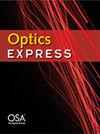针对独立于测量设备的实用连续可变量子密钥分发系统的光注入攻击
IF 3.2
2区 物理与天体物理
Q2 OPTICS
引用次数: 0
摘要
与测量设备无关的连续可变量子密钥分发(CV-MDI QKD)可以有效防御所有探测侧攻击。因此,源端是实施量子黑客攻击的最后战场。本文研究了光注入攻击下 CV-MDI QKD 系统的实际安全性。在这里,我们首先描述了两种不同的光注入攻击,即诱导光折射攻击和强功率注入攻击。然后,我们考虑了 Eve 只攻击 CV-MDI QKD 系统的一方或双方的三种攻击情况。基于对参数估计的分析,我们发现在光注入攻击的作用下,合法通信双方会高估系统的秘钥率。这就为夏娃在实用的 CV-MDI QKD 系统中成功获取秘钥信息打开了安全漏洞。特别是与激光破坏攻击相比,上述攻击使用的注入光功率较低,对系统的安全性影响更为严重。为了消除上述影响,我们可以通过在铌酸锂材料中掺入各种杂质或使用光隔离器、环行器、光功率限制器和窄带滤波器等保护装置来提高系统的实际安全性。除此之外,我们还可以使用强度监测器或光电探测器来检测光注入攻击。本文章由计算机程序翻译,如有差异,请以英文原文为准。
Light-injection attack against practical continuous-variable measurement-device-independent quantum key distribution systems
Continuous-variable measurement-device-independent quantum key distribution (CV-MDI QKD) can defend all detection-side attacks effectively. Therefore, the source side is the final battlefield for performing quantum hacking attacks. This paper investigates the practical security of a CV-MDI QKD system under a light-injection attack. Here, we first describe two different light-injection attacks, i.e., the induced-photorefractive attack and the strong-power injection attack. Then, we consider three attack cases where Eve only attacks one of the parties or both parties of the CV-MDI QKD system. Based on the analysis of the parameter estimation, we find that the legitimate communication parties will overestimate the secret key rate of the system under the effect of a light-injection attack. This opens a security loophole for Eve to successfully obtain secret key information in a practical CV-MDI QKD system. In particular, compared to the laser-damage attack, the above attacks use a lower power of injected light and have a more serious effect on the security of the system. To eliminate the above effects, we can enhance the practical security of the system by doping the lithium niobate material with various impurities or by using protective devices, such as optical isolators, circulators, optical power limiters, and narrow-band filters. Apart from these, we can also use an intensity monitor or a photodetector to detect the light-injection attack.
求助全文
通过发布文献求助,成功后即可免费获取论文全文。
去求助
来源期刊

Optics express
物理-光学
CiteScore
6.60
自引率
15.80%
发文量
5182
审稿时长
2.1 months
期刊介绍:
Optics Express is the all-electronic, open access journal for optics providing rapid publication for peer-reviewed articles that emphasize scientific and technology innovations in all aspects of optics and photonics.
 求助内容:
求助内容: 应助结果提醒方式:
应助结果提醒方式:


